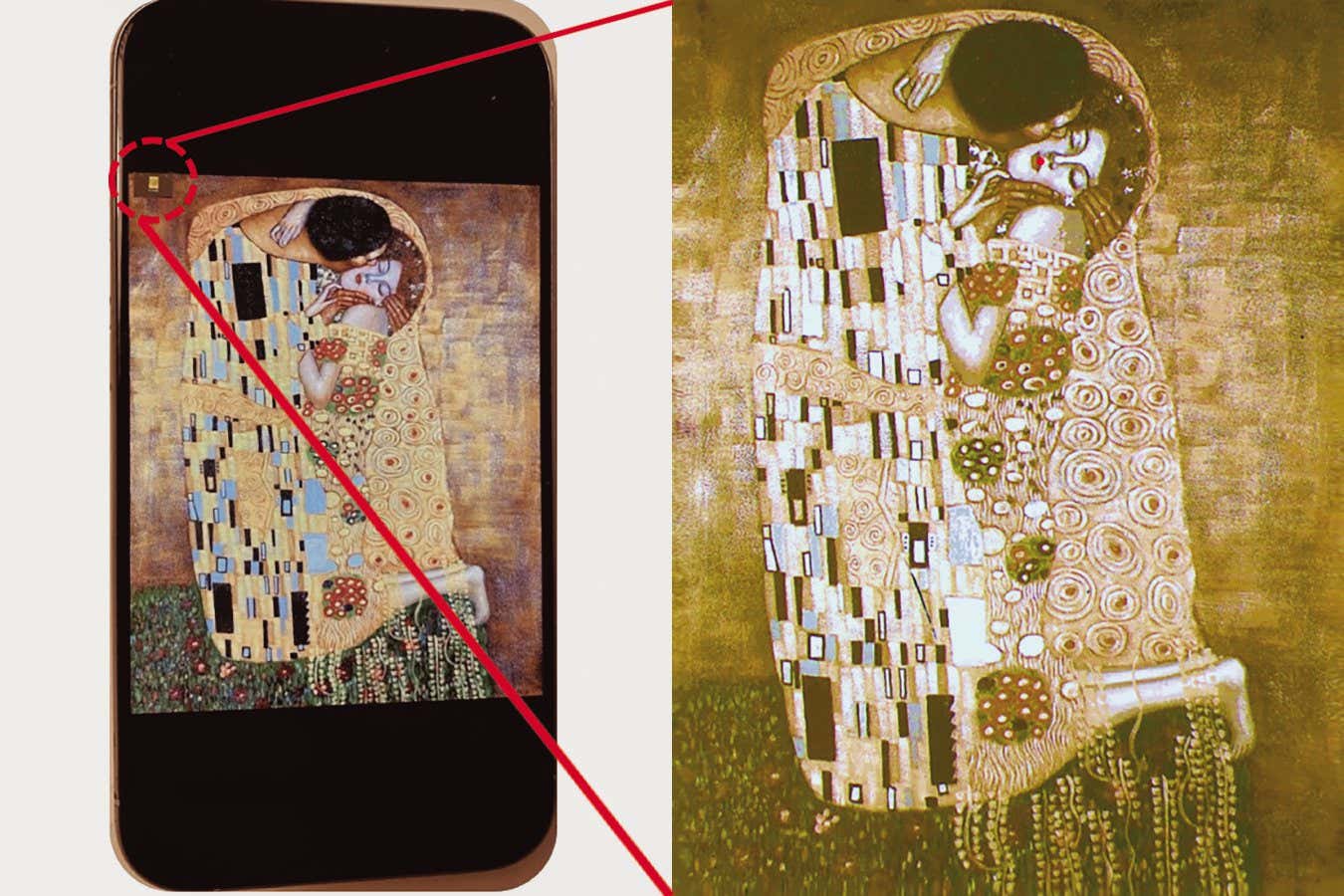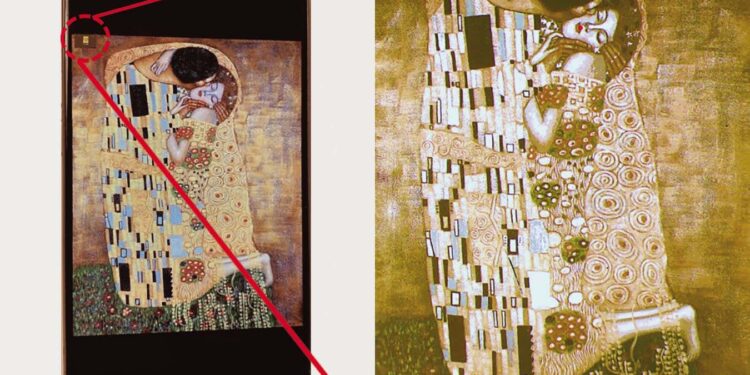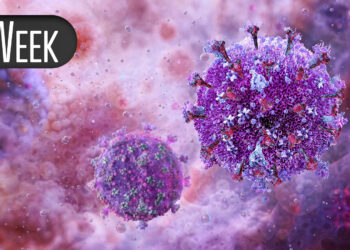
Gustav Klimt’s The Kiss displayed on an iPhone (left), on which a small e-paper display with the same image (right) is placed
Kingston Frameworks; Kunli Xiong et al. (2025)
A new kind of colour e-paper can present bright, high-resolution and full-colour images and video while using minimal energy, pointing to a possible future for display devices.
While traditional LED screens emit red, green and blue light to produce colour, e-paper screens use tiny molecules to create images. Until recently, these devices were limited to black and white, but colour screens are now available. Still, they struggle to refresh fast enough to display video.
To address this, Kunli Xiong at the University of Uppsala, Sweden, and his colleagues have developed e-paper with pixels made from tungsten oxide nanodiscs. Each pixel is around 560 nanometres, giving the paper a resolution of 25,000 pixels per inch (PPI). By contrast, smartphones typically have a PPI in the hundreds.
The tungsten-oxide nanodiscs are made with slightly different sizes and spacings so each reflects a particular band of light. By placing them together, it is possible to present a range of colours, and the brightness can be varied by a brief electrical pulse that places an ion inside the disc. Once a colour is set, the ions stay put and the colour holds without continuous power.
The researchers created an e-paper display measuring just 1.9 millimetres by 1.4 millimetres, which is around 1/4000th the area of a normal smartphone display, and used it to display a 4300-by-700 pixel crop of Gustav Klimt’s The Kiss – an extremely high resolution for such a small device. It can also refresh roughly every 40 milliseconds, which is fast enough to display video.
Another benefit of the new e-paper is its incredibly low energy use, says Xiong. The display uses around 1.7 milliwatts per square centimetre when displaying video, and around 0.5 milliwatts per square centimetre for still images.
“What I like about this work is it is both fast enough to support video, while keeping energy use to a minimum. That’s because once elements are switched, they stay switched without having to refresh them,” says Jeremy Baumberg at the University of Cambridge.
Topics:
Source link : https://www.newscientist.com/article/2500981-colour-e-paper-screen-offers-high-res-video-with-low-energy-use/?utm_campaign=RSS%7CNSNS&utm_source=NSNS&utm_medium=RSS&utm_content=home
Author :
Publish date : 2025-10-22 16:00:00
Copyright for syndicated content belongs to the linked Source.












